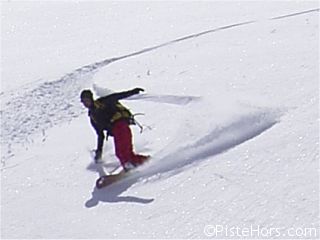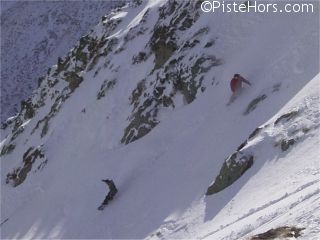
Gear > Backcountry Snowboarding > Leading Backcountry Snowboard Groups
The same basic safety requirements apply to everyone who goes into the mountains during the winter months. However leading groups of snowboarders presents some unique challenges.

It is one thing to look at the overall avalanche risk, 2, 3 4 and make some kind of guess as to whether you are going to be safe or not. What is important is to understand the detail of the bulletin and the weather conditions in the days prior to the trip and then make plans, and adjustments based on this information. One problem with France is that the avalanche bulletin is published only in French. Youd think that with some 3,700 employees at Meteo France theyd manage to produce an English version.
On the day snowboard groups take more organisation and discipline than ski groups. Snowboarders tend to ride faster than skiers and frequent stops on slopes are unwelcome. Under normal conditions this may require the leader to move a considerable way ahead to evaluate hazards before signalling to the others. I would strongly recommend assigning a tail end Charlie whose job it is to descend last. This person should be a strong boarder who can assist others who have difficulty on the slope if necessary. A pair of radios (such as simple PMR 446 sets) with charged batteries are extremely useful for coordination.

Be careful following too close on suspect slopes
When conditions deteriorate, snow, low cloud or mist, good discipline and coordination becomes absolutely essential. You should avoid riding above ski pistes, especially where the slope is steeper than 25 degrees and the avalanche risk is above 2. If you cause an avalanche that hits people on open runs you risk a prison sentence or a season ban from riding in France. You should always tour with others, that means there is someone to help if you get into difficulties. The 25 degree rule is a good one to apply when travelling in the backcountry when the avalanche conditions are dangerous, especially when climbing. Learn to read a map and plan routes that avoid such slopes.
The backcountry is not the same as the snow park. Don't perform stunts or jump off cliffs. The stunts you see in snowboard movies are carefully set-up. The extra weight of jumps and tricks can be a trigger for an avalanche.
When climbing be wary of ridges with cornices (overhanging snow), these are unstable and it is also possible to fall through the snow. There were at least two such incidents in France in 2003 (at Méribel killing two snowboarders and in the Vosges).
<< | Backcountry Snowboarding | Snowshoes >>